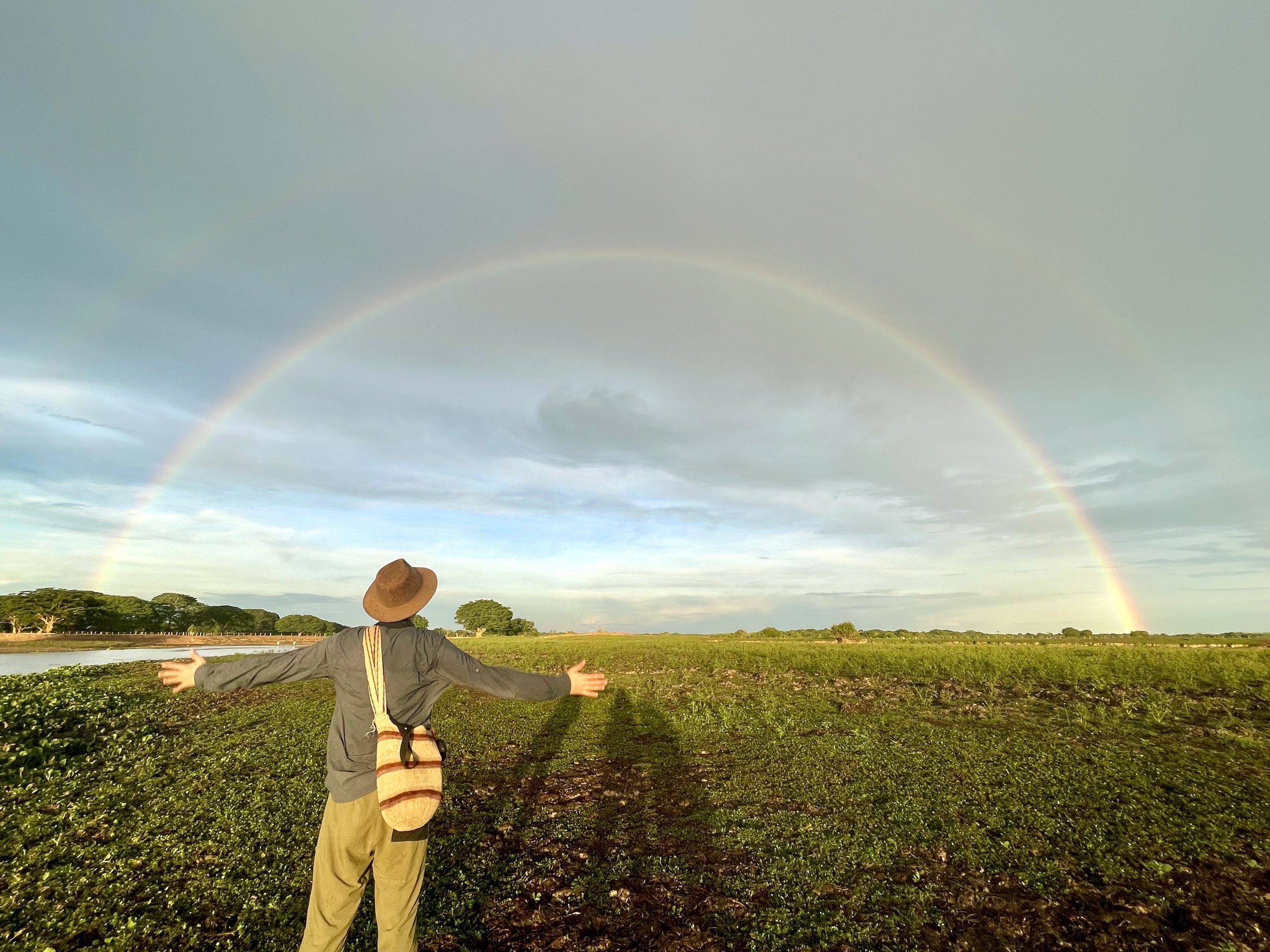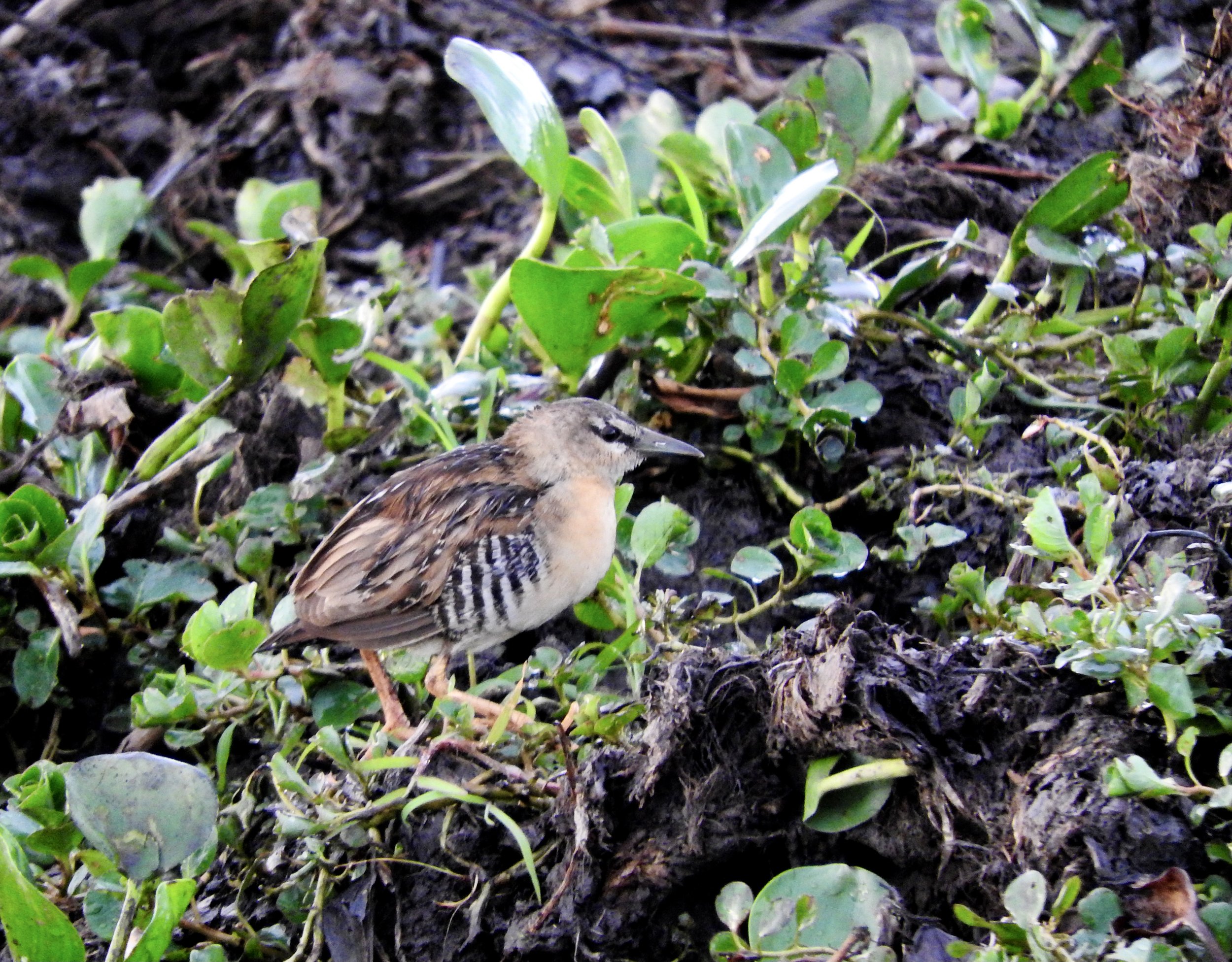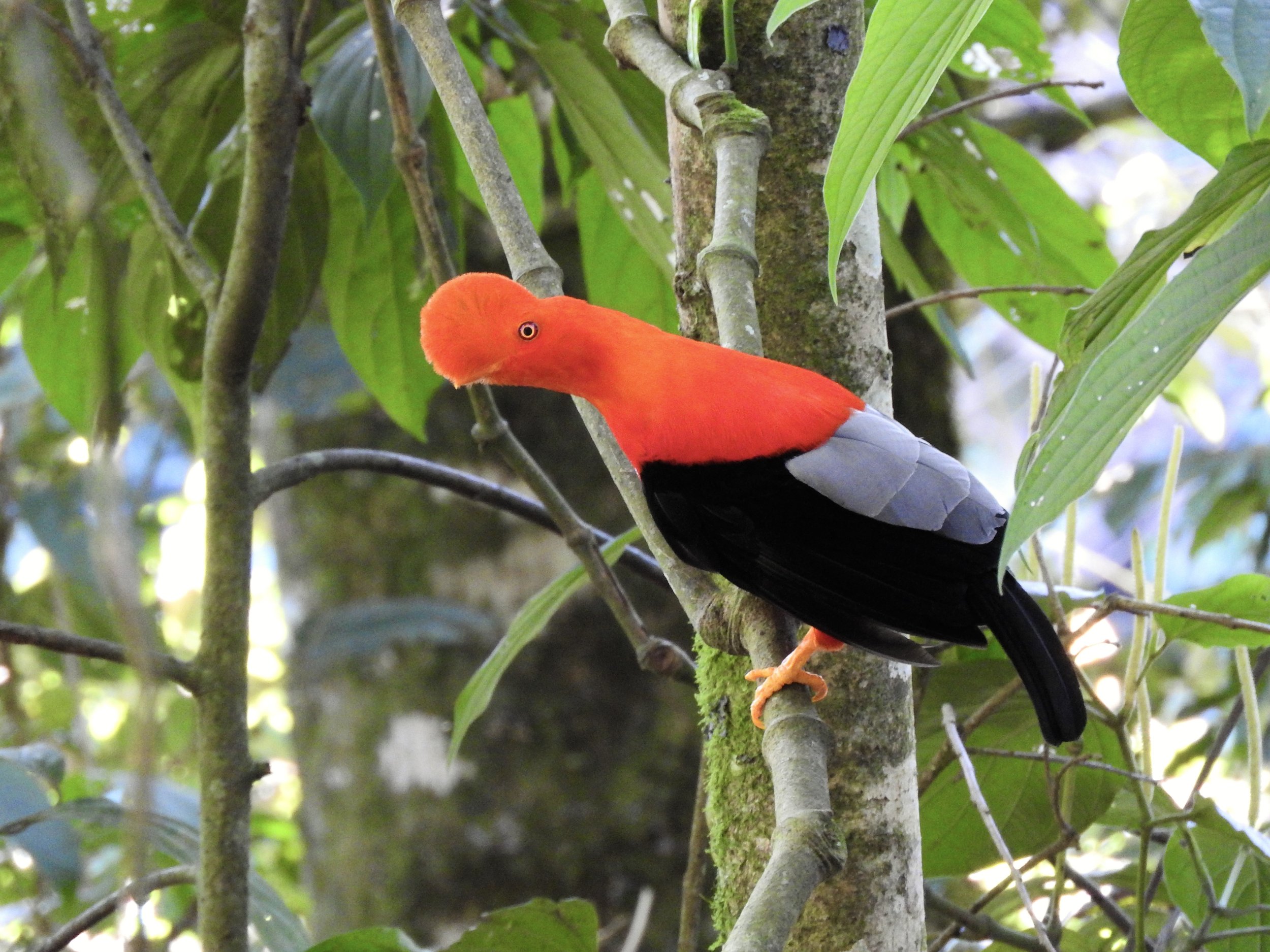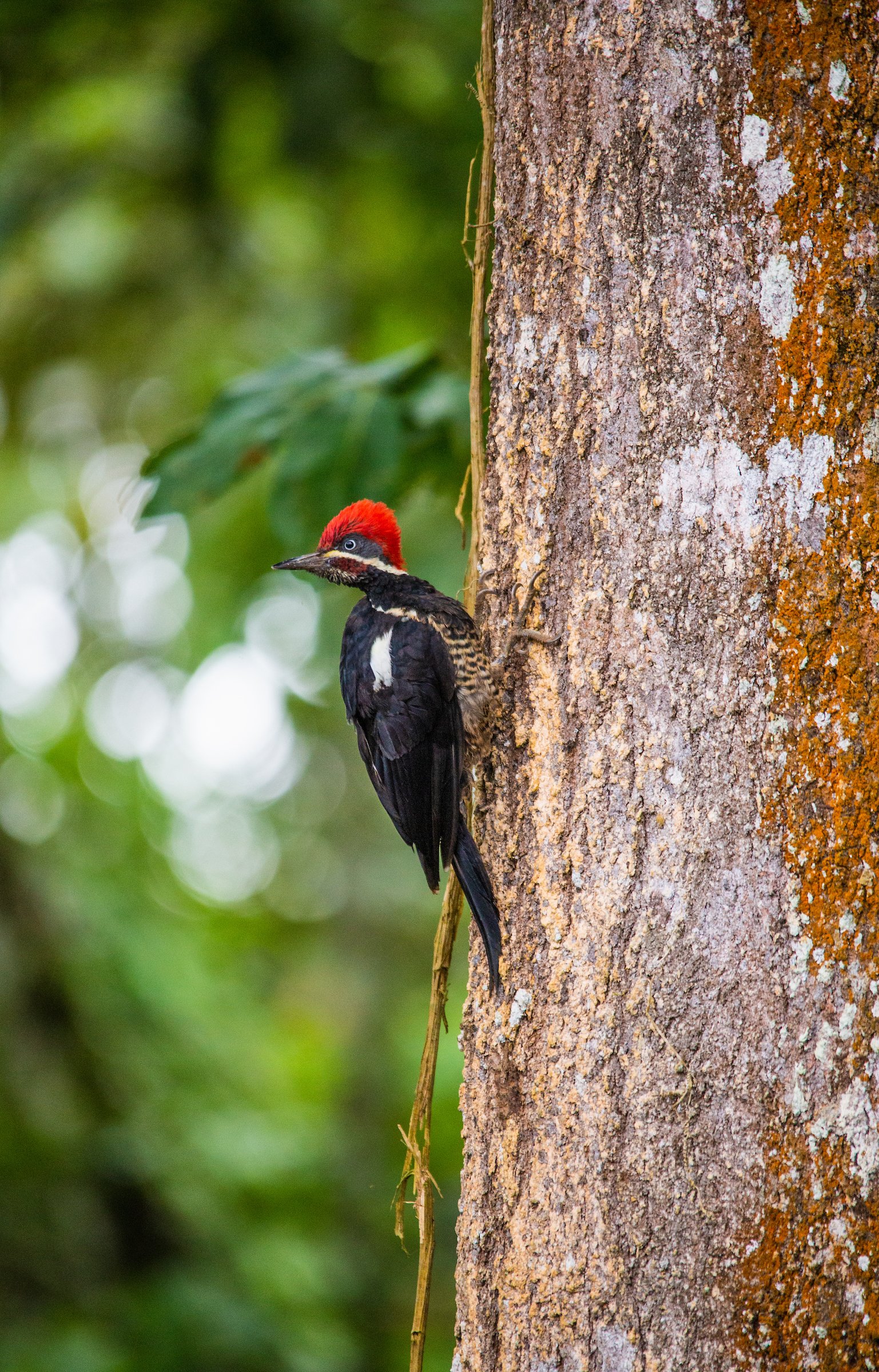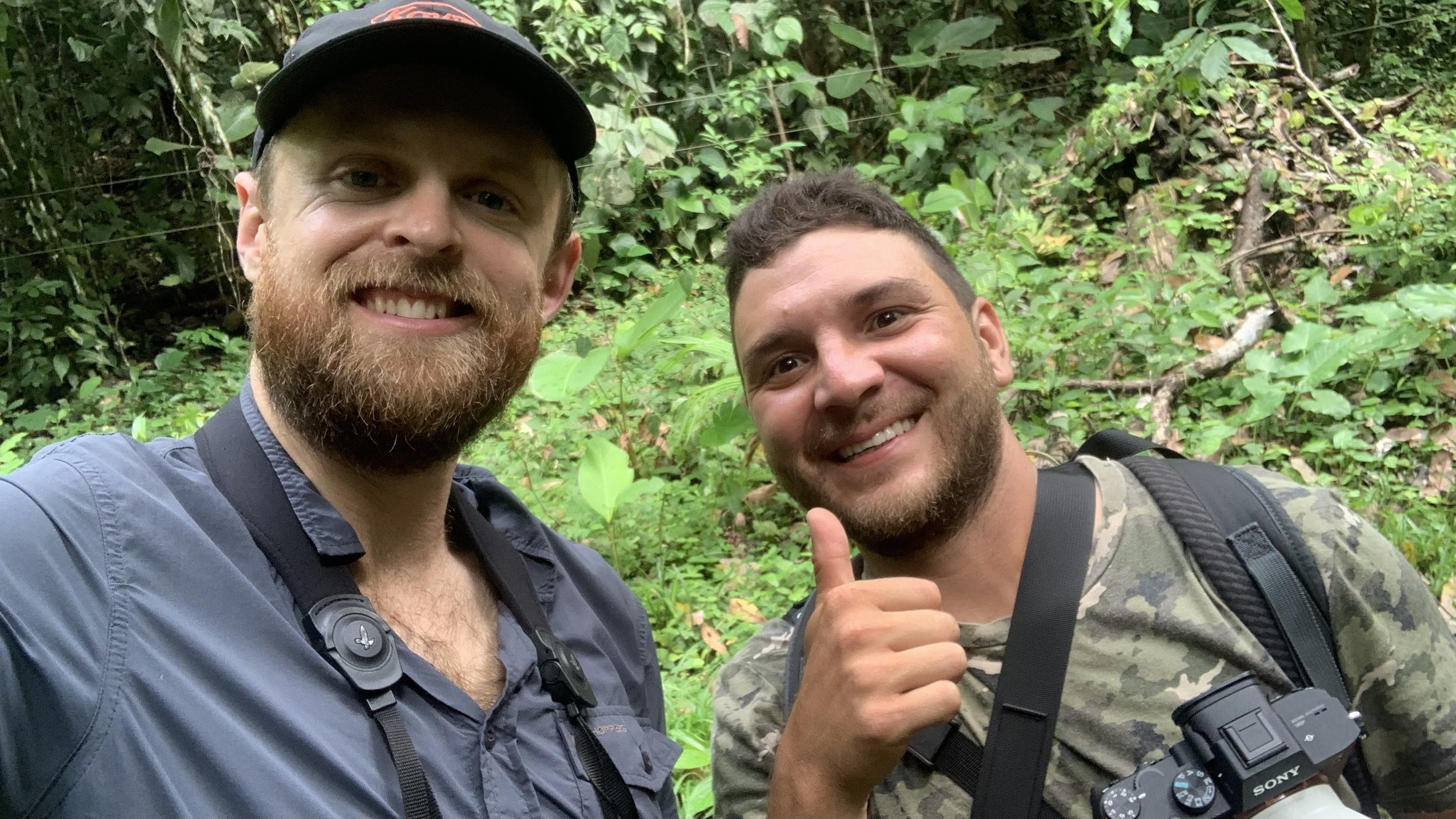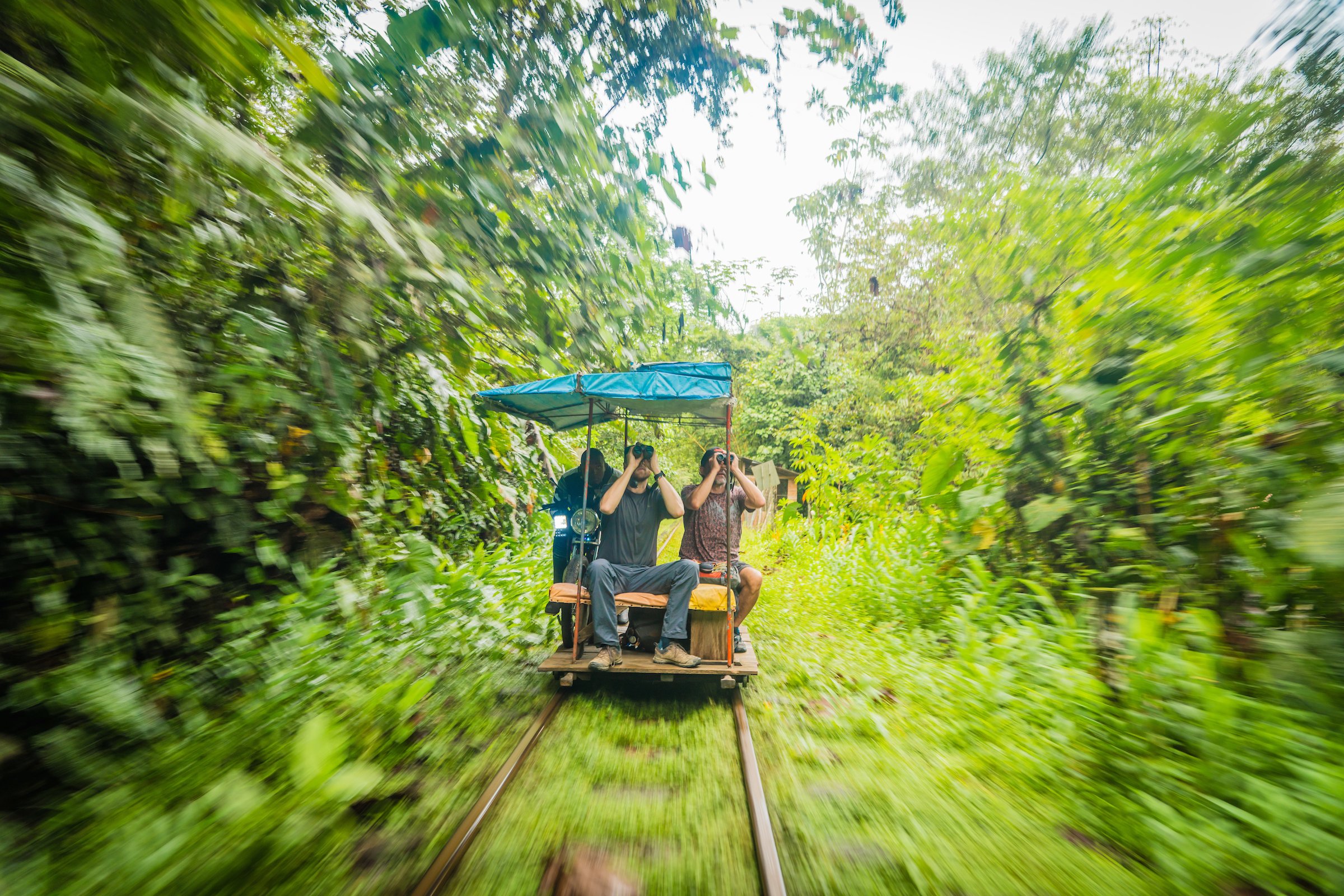Mission: Yellow-breasted Crake
The Yellow-breasted Crake is a tiny and rarely seen crake species with just a dozen eBird records in Colombia. Our host Chris visited his favorite region of Colombia in search of this enigmatic species.
In early April, I got a message from Kaya, a German friend who works as a guide in the Colombian department of Casanare (check out this blog to see why Casanare is my favorite region in Colombia). The message contained a cellphone photo of a tiny waterbird surrounded by water hyacinth plants. She told me that she’d just seen this little bird, and neither she nor any of the local guides had seen it before.
I instantly recognized the photo: it was a Yellow-breasted Crake. And it made sense that none of them had seen one before - there were no eBird records of this species for Casanare and just a dozen records across the entire country. Furthermore, only two of those twelve records even had photos, and none had audio recordings. In short, the Yellow-breasted Crake is an exceptionally rare bird in Colombia.
I found out from Kaya that the bird had been seen at a reserve named Hato El Boral, just 90-minutes from the local capital of Yopal. I spoke with my friend Laura Miranda from the Cunaguaro Foundation a few weeks later. Laura’s also a birder, and she told me that she’d been out to El Boral a couple of times, following up on the sighting. She’d seen the bird both times, and the crake was still around. My interest was piqued.
Birding Fact: the taxonomy of Yellow-breasted Crake is contested. Some authorities place it in the monotypic genus Hapalocrex, and it was formerly sometimes placed in the obsolete genus Poliolimnas or united with the Ocellated Crake in Micropygia. DNA analysis revealed that it doesn’t form part of the Porzana genus of crakes and rails, while new genetic studies propose that it should be moved to the genus Laterallus. Clearly there’s a lot more we need to find out about this bird!
Now I’ve enjoyed fleeting glimpses of this species before in Costa Rica at Medio Queso Wetland, which has practically become the go-to stakeout site for this crake. However, since my Colombia bird list is the only one that matters to me, the prospect of spotting this bird in Colombia was tempting. Plus, I adore Casanare and don’t need much of an excuse to get back there.
The crake was showing well due to the shallow water levels in the little watering hole where it was being seen. April marks the transition period between the dry and wet seasons, so the rains were starting up again. I had a while before the pools filled up, though, and I was eager to travel before then. It was pretty likely that the crake would move to a new location when the current pool filled up and left it nowhere to hide away among the floating water hyacinths.
The small patch of water hyacinth where the bird was first spotted at Hato El Boral
I arranged a plan with Laura and Kaya, booked a flight, and eagerly packed my bags for the trip. After arriving in Yopal on Thursday night, Laura picked me up at 5 am sharp on Friday morning, and off we went, driving through some ominously heavy rain.
However, the omens improved when we encountered three Giant Anteaters entering Hato El Boral - a mother with a baby on her back and an older juvenile, still in tow from the previous breeding season. Even Laura had never seen three anteaters together before, so as we arrived at the Hato and walked the few hundred meters over to the watering hole, I felt good about our chances at the crake.
Three Giant Anteaters - what a way to start the day.
After enjoying lovely views of classic Casanare species like Jabiru, Roseate Spoonbill, and Brazilian Teal, we settled in on a small seat to scan the water hyacinth patch for signs of the crake. After about an hour, I suddenly spotted a tiny little bird move into the open on the far side of the pool. I got my bins on it, and there it was: Yellow-breasted Crake, out in the open!
It came out a couple of times after that. The views were brief but clear, and I even managed a photo. To say I was elated would be an understatement. Even after the cellphone photos sent to me by Kaya and Laura, a part of me still didn’t believe the bird would still be there or prove so easy to see.
Laura and I celebrating our first view of the Yellow-breasted Crake at Hato El Boral
We hung around the spot for a few more hours, and although the bird called a couple of times, it didn’t show itself again. So we headed back for lunch at El Boral, where we met Kaya, who had come along with her friend for the rest of the weekend. The plan was to go for a horse ride the next day and then visit another farm-hotel nearby on Sunday.
At about 5 pm, it started to drizzle, but I couldn’t resist one last crake hunt. So we walked over to the watering hole again. The rain was picking up, and I told them I didn’t think the bird would show again in those conditions. How wrong I was.
As we strolled past the pool, not making much effort to whisper or scan the plants, I spotted a slight movement among the hyacinths out of the corner of my eye. The crake was walking out in the open between patches of plants without a care in the world!
Our crippling views of the Yellow-breasted Crake in Casanare
For the next 30-minutes, we enjoyed truly crippling views of the Yellow-breasted Crake as it picked its way through the hyacinths and sat out in the open. I had time to take photos, camera videos, and even digiscope the bird before we finally called it a day. And to complete a dream day in Casanare, we were treated to a full double rainbow arcing across the evening sky. Three anteaters, two rainbows, and a crake - the recipe for an incredible day if ever I heard one.
And a double rainbow just to finish the day off in style!
There’s a fairly unbelievable postscript to this story as well. My Sunday plans fell through, so I spent Saturday night at a lovely little riverside B&B named Posada Hato El Diamante. I planned to enjoy a lazy Sunday there in a hammock before taking an afternoon bus back to Yopal for my nighttime flight.
I woke early on Sunday to a cacophony of birdsong and howler monkeys grunting in the treetops. So after grabbing my binoculars - and not, crucially, my camera - I took a stroll around the garden. There’s a small wetland at the base of the garden, and as I walked along the edge, I startled a small, yellowish crake with dangling orange legs which flew weakly into a clump of grass next to some flowering water hyacinths.
Surely I couldn’t be seeing another Yellow-breasted Crake?! One of Colombia’s least-reported species, in a new location, just a day after ticking it off my list: that would be too good to be true!
I played a small snippet of the bird’s song on Merlin (Merlin: Costa Rica, incidentally - the crake is so rare in Colombia that it doesn’t even appear on the app), and the little bird climbed up on top of the grass in the open. It sat there for about ten seconds, but it was unmistakably a Yellow-breasted Crake. I was utterly speechless. Although I then ran for my camera, the bird never showed again. But talk about luck!
The little wetland where I saw the crake again at Posada Hato El Diamante
It seems to me that the Yellow-breasted Crake is probably more widespread in Colombia than records suggest. I highly doubt that it’s common; after all, the bird seems to show more reliably at dawn and dusk, so there would likely be far more records if it were common. Yet, its tiny size and retiring nature surely mean it’s been overlooked in many places.
Regardless, the Yellow-breasted Crake has to rank as one of my best sightings in Colombia to date. Hopefully, now the owners of Hato El Boral and El Diamante will keep their eyes out for the bird, and it can become a target species for birders in Casanare in years to come. I'll be back to see it again, that's for sure.
Yellow-breasted Crake





